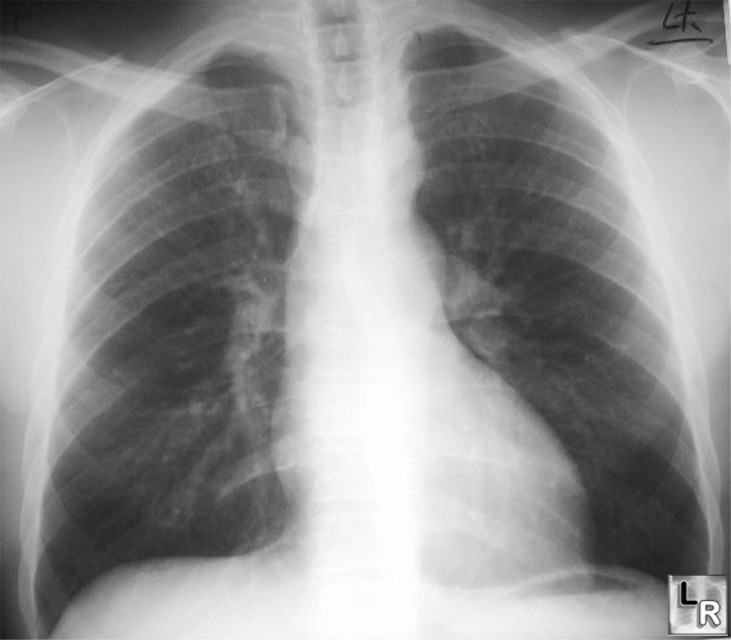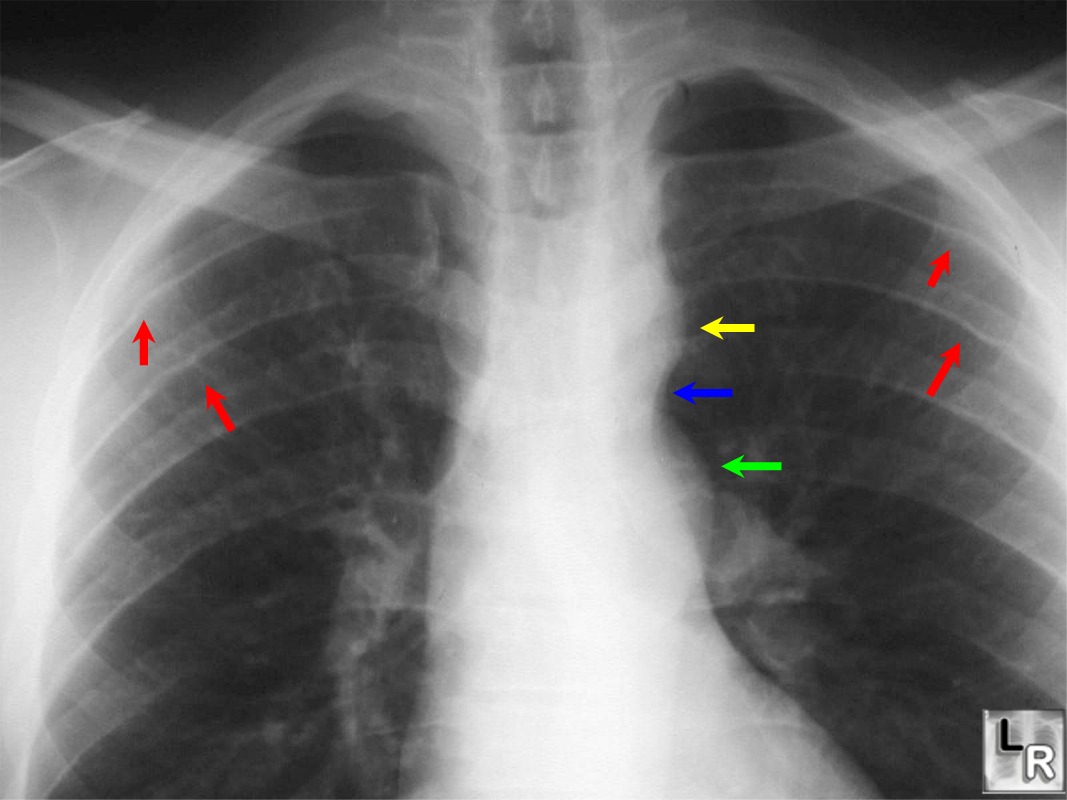Coarctation Of the Aorta
l General
o 2X more common in males
l Common classification
o Infantile or preductal form
o Adult or juxtaductal form
l Adult Form
o Adult or juxtaductal (postductal) form is more common
o Usually localized
o Area of coarctation is just beyond the origin of LSCA at level of ductus
l Infantile Form
o Infantile, preductal form = diffuse type
o Long, tubular segment of narrowed aorta
§ From just distal to innominate to level of ductus
o Intracardiac defects (VSD,ASD, deformed mitral valve) present in 50% of diffuse type
§ Also patent ductus arteriosis
l Other Classifications
o More complicated classifications take following into account:
§ Location and length of coarct
§ Patency of ductus arteriosis
§ Relationship of coarct to ductus
l Associated Defects
o Bicuspid aortic valve (most common associated defect seen in 75-80%)
o VSD
o ASD
o Transposition
o Found in 25% of patients with Turner’s Syndrome
l Shone Syndrome
o Coarctation
o Aortic stenosis
o Parachute mitral valve
o Supravalvular mitral ring
l Imaging findings

Coarctation of the aorta.
See photo below for labeled close-up of upper thorax.
Click here or on photo to enlarge.
o Rib Notching
§ Single best sign
§ Older the person, more likely to have rib notching
§ Majority have it over 20 years of age
§ Rib notching occurs in the high pressure circuit
§ Most often involves 4th-8th rib
· Sometimes may involve 3rd and 9th
· Does not involve 1st and 2nd ribs
· Intercostals come off costocervical trunk and do not supply collateral flow to descending aorta
§ 4th-8th do anastomose with internal mammary to form collaterals for descending aorta
§ Rib Notching–Unilateral
· Isolated Right sided notching occurs when LSCA is involved in actual coarctation
· Isolated Left sided notching can occur if there is an aberrant RSCA which arises from below coarct
o Figure 3 Sign
§ Caused by (in order) either a dilated LSCA or aortic knob, “tuck” of coarct itself, and poststenotic dilatation
§ Occurs in 1/3–1/2 of patients with coarct
§ Matched by “reverse 3” or “E” on barium-filled esophagus
o Convexity of left side of mediastinum just above aortic knob 2° to dilated LSCA
o Convexity of ascending aorta in 1/3
Close up of upper thorax in a patient with Coarctation of the Aorta.
The red arrows point to rib notching caused by the dilated intercostal arteries.
The yellow arrow points to the aortic knob, the blue arrow to the actual coarctation
and the green arrow to the post-stenotic dilation of the descending aorta.
Click here for same photo without labels.
The red arrows point to rib notching caused by the dilated intercostal arteries.
The yellow arrow points to the aortic knob, the blue arrow to the actual coarctation
and the green arrow to the post-stenotic dilation of the descending aorta.
Click here for same photo without labels.

Aucun commentaire:
Enregistrer un commentaire